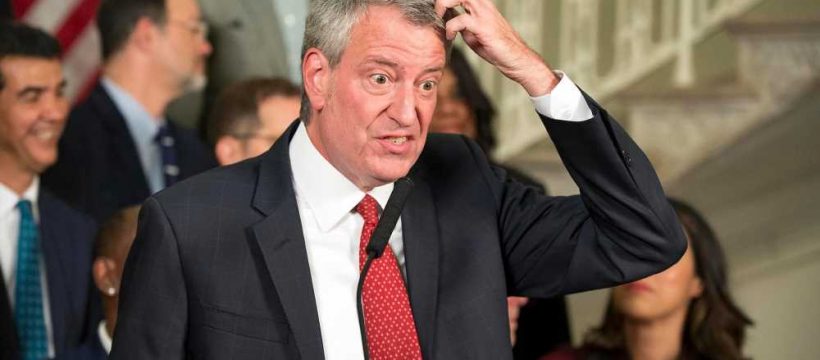More On:
Kendra's Law
In feud with de Blasio, Cuomo lectures mayoral hopefuls on city issues
The system failed them — then they threw innocents onto the subway tracks
Kendra’s Law might have prevented Times Square subway push, advocate says
City unveils new $21M spending plan for homeless crisis
“He’s randomly assaulting people. . . . What are we doing in society when we are releasing these people right back onto the street?” asked Police Commissioner Dermot Shea on Tuesday in the wake of Monday’s unprovoked assault of an Asian-American woman in Chinatown. “It’s craziness.”
Cops say the alleged Chinatown attacker, Alexander Wright, lives in a homeless shelter and was arrested four times in the last year for similar random assaults. And he’s only the latest in a long line of dangerously troubled people that the city can’t or won’t treat.
Refusing to confront this mental-health crisis may be the worst failure of the de Blasio mayoralty.
The pattern is all too familiar to New Yorkers: The perpetrator is usually an unstable homeless person with an escalating history of bizarre, dangerous behaviors. Here’s a partial list of the horrors:
- Last Friday, another homeless man allegedly pushed another Asian woman, 65, down a flight of stairs at a Midtown subway station. The suspect (John Chappell, 64) was busted last December in the unprovoked assault of woman waiting for the R at the Herald Square station. He had 77 prior arrests then but got a simple desk-appearance ticket.
- In January, a deranged man shoved a commuter into a moving train at the Lexington Avenue/59th Street station.
- Just two weeks in February saw more than a dozen attacks, including a number of subway slashings, a Bronx woman shoved onto the tracks and a bus operator struck with a 2-by-4.
- In early May, a Harlem man was shoved to the tracks in an unprovoked attack at the 135th Street/Lenox Avenue subway station.
- On May 23, four people, including a cop, were attacked in two separate incidents — where one attacker wielded a hammer and the other had to be sedated — in the subway.
- A few days later, a mumbling vagrant shoved a 36-year-old Asian man in front of an oncoming F train in Queens.
Yet Mayor Bill de Blasio continues to turn a blind eye to the problem. Asked last October how he planned to address the city’s mentally ill homeless problem, the mayor droned on about New Yorkers disturbed during the pandemic turning to his wife’s scattershot $1.25 billion ThriveNYC program — which focuses not on this kind of issue, but on lesser issues such as depression.
Also at fault are recent state reforms that tie cops’ hands and set dangerous people free. Jail is far from the ideal treatment for the deeply troubled, but at least it gets a threat off the street until the city can step in with services. It is not humane, to either the victim or the perpetrator, to let the ill go untreated. It is not compassionate to leave a mentally ill person sleeping on the street — they are not in their right mind when they say they want to be there.
After the holiday weekend’s violence, mayoral candidate Eric Adams called on de Blasio to adopt his anti-crime policies — including, crucially, much greater use of Kendra’s Law to mandate treatment for dangerously mentally ill individuals.
“Judges, do your job. It’s time to use Kendra’s Law to deal with the mental-health crisis that we’re seeing,” said Adams as he stood with members of the Transport Workers Union last month.
The law, now two decades old, lets courts order seriously mentally ill people with a past history of violence and who pose a threat of future violence to enter outpatient treatment. But it can’t help if city leaders don’t demand its use (and push the Legislature to strengthen it).
If these attacks grow more frequent as city streets get crowded again, tourists and office workers won’t come back in the numbers Gotham needs. City Hall needs to start dealing with it, or de Blasio will also go down in history as the man who bungled New York’s post-pandemic reopening.
Share this article:
Source: Read Full Article

